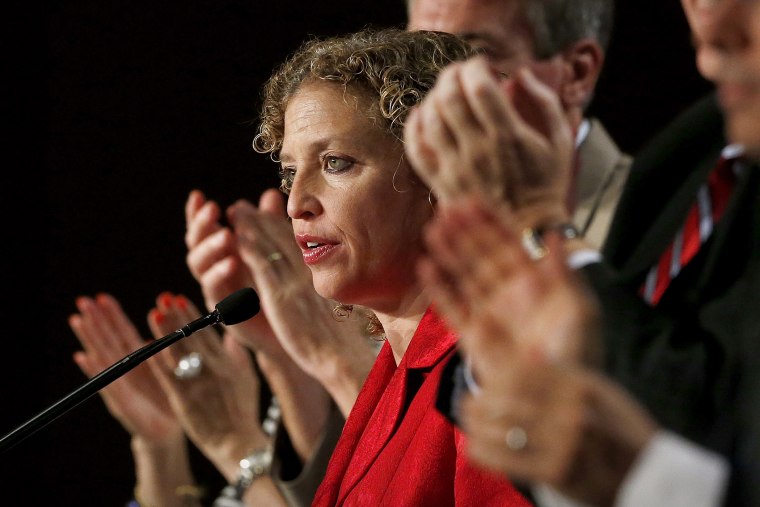Just over a year after Democrats got blown out in the 2014 congressional elections, the national party released a much-delayed report Tuesday from a task force of officials charged with trying to help the party perform better in midterm elections and in lower-profile state races.
Democrats have won the popular vote in five of the last six presidential elections but have been swamped in midterms, when core segments of the party’s electorate tend to go to the polls in lower numbers. Since President Obama’s election, Democrats have lost more than 900 state legislative seats, 13 Senate seats, 69 U.S. House seats and 12 governorships.
Since President Obama’s election, Democrats have lost more than 900 state legislative seats, 13 Senate seats, 69 U.S. House seats and 12 governorships. What went wrong?'
“The Democratic party has been extremely successful at winning presidential elections and we have to continue being successful in winning presidential races,” said outgoing Kentucky Gov. Steve Beshear, a member of the task force whose seat was recently won by a Republican, at a press conference at the party’s headquarters in Washington. “But we have not concentrated enough on state and local politics and state and local races and we have to gear into that much more than we have in the past.”
The 19-page report from the Democratic National Committee’s Victory Task Force doesn’t address the core issue of drop-off voters head on -- the words “turn out” or “drop off” don’t even appear in the report -- nor does it call for any fundamental changes to the Democratic Party’s message or policy, as a similar Republican “autopsy report” did after the 2012 election.
“We don’t believe that we need to change anything from a policy standpoint to win elections,” said task force member Maria Cardona. The report itself argues that the 2014 election “made it abundantly clear” that Americans “overwhelmingly support the issues and values that the Democratic Party fights for every day.”
But the report does make a number of more limited organizational recommendations, especially to strengthen state parties and build out a decimated Democratic bench, that could serve the party well.
RELATED: Democrats struggle with the down-ballot blues
The cornerstone of the report is a plan to provide more resources, training, coordination and accountability to state parties, in order to make sure they are able to pull their weight in elections. This includes more money from the DNC, but also higher expectations of what the state parties can bring to the table.
DNC Chairwoman Debbie Wasserman Schultz said the committee “engaged in a little tough love” to get to the bottom of what went wrong in 2014, and said the DNC has renegotiated contracts with the state parties and others to be better prepared for the future.
The 11-member task force included a wide range of advisers, from Beshear to AFSCME president Lee Saunders and Google CEO Eric Schmidt. At least two people affiliated with Hillary Clinton’s presidential campaign sat on the task force, including her general counsel, Marc Elias, and her digital strategist, Teddy Goff, who played a similar role in Obama’s reelection campaign.
"We don’t believe that we need to change anything from a policy standpoint to win elections."'
The task force released initial recommendations in February, when it said the final report would come in May. Asked by MSNBC why the report is being released seven months after the self-imposed deadline, Wasserman Schultz said the party needed more time to get it right. “We just weren't ready,” she said.
But since February, she said the task force members had moved from an outside advisory role to a more internal one, aimed at implementing the changes it recommended.
The report also lays out way to improve efforts to recruit down-ballot candidates to replenish the pipeline of future Democratic leaders, through training and better support from the DNC. It also plans to create a more unified messaging operation to explain what it means to be what the party stands for.
A major emphasis of the party in the next five years will also be redistricting, the decennial process of redrawing congressional boundaries. Republicans dominated this process in 2010, and were able to win more U.S. House seats despite winning fewer actual votes in 2014.
Democrats got some good news recently when they won three seats on the Pennsylvania Supreme Court, which controls redirecting in the state, after Wasserman Schultz fundraised for candidates there.
Overall, the ambitions of the report are fairly limited. But that speaks to fundamental, demographic challenges the party has in midterm elections, which may have no direct solutions.
